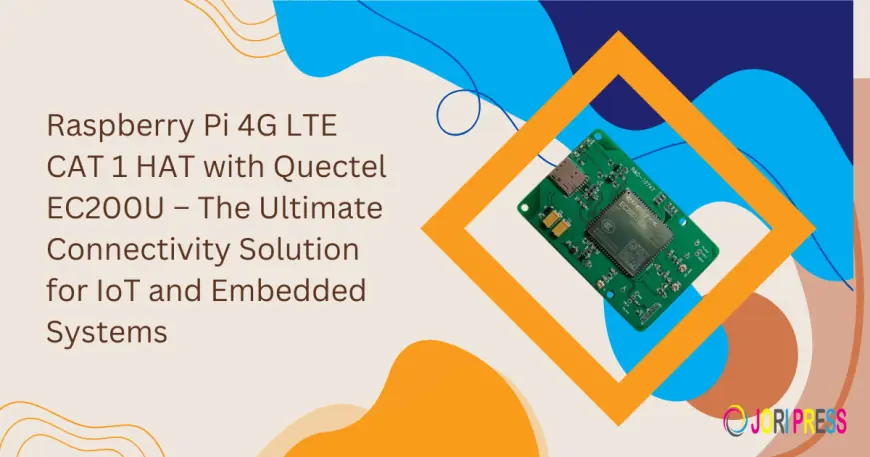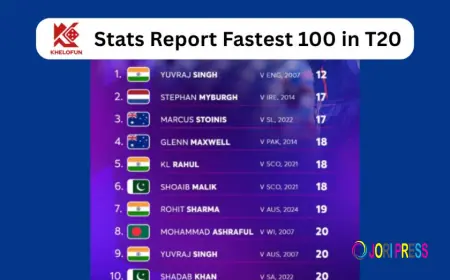Raspberry Pi 4G LTE CAT 1 HAT with Quectel EC200U – The Ultimate Connectivity Solution for IoT and Embedded Systems
Raspberry Pi 4G LTE HAT delivers fast, reliable IoT connectivity with the Quectel EC200U module, perfect for embedded systems and real-time applications.

In the modern era of intelligent devices and distributed systems, achieving reliable long-range wireless communication is one of the biggest challenges for developers and businesses. Traditional Wi-Fi systems suffer from limited coverage, dependency on local infrastructure, and inconsistent reliability. This is where the Raspberry Pi 4G LTE CAT 1 HAT with Quectel EC200U emerges as a powerful solution—providing stable cellular connectivity, global network support, low power consumption, and professional-grade performance for IoT and embedded applications.
This comprehensive guide explores every feature, benefit, technical specification, use case, and setup detail of the Quectel EC200U LTE CAT 1 HAT, helping you understand why it is one of the most valuable upgrades for any Raspberry Pi-based IoT project.
What Is Raspberry Pi 4G LTE CAT 1 HAT with Quectel EC200U?
The Raspberry Pi 4G LTE CAT 1 HAT with Quectel EC200U is an advanced communication expansion board designed to add 4G LTE cellular connectivity to any Raspberry Pi. Based on Quectel’s industrial-grade EC200U LTE CAT 1 module, this HAT enables devices to transmit and receive data over cellular networks, eliminating the need for Wi-Fi or Ethernet access.
Why LTE CAT 1?
LTE CAT 1 is the ideal connectivity category for IoT applications because it offers:
-
Moderate data speeds
-
Low latency
-
Lower power consumption than traditional 4G modules
-
Full mobility and voice/SMS support
-
Better coverage in remote regions
This makes it perfect for IoT applications such as tracking, smart metering, industrial automation, and environmental monitoring.
Why the Raspberry Pi 4G LTE CAT 1 HAT Stands Out
The Quectel EC200U-based HAT is engineered specifically for IoT developers seeking stable, reliable, and globally compatible connectivity. It outperforms traditional Wi-Fi dongles and low-power GSM modules by offering:
-
Broader geographical coverage
-
More secure connectivity
-
Lower energy consumption
-
Better integration with Raspberry Pi boards
This combination delivers unmatched performance for both personal and enterprise-level IoT deployments.
Key Features of Raspberry Pi 4G LTE CAT 1 HAT with Quectel EC200U
1. High-Performance LTE CAT 1 Connectivity
The Quectel EC200U is built on LTE CAT 1 technology, ensuring consistent and reliable data performance. Unlike higher LTE categories meant for heavy bandwidth tasks (like video streaming), CAT 1 is optimized for IoT devices where stability and continuous connectivity are more important than speed.
Benefits:
-
Stable Upload/Download Speeds: Offers up to 10 Mbps downlink and 5 Mbps uplink, more than enough for MQTT, HTTP, HTTPS, remote monitoring, OTA updates, and sensor-based data transmission.
-
Low Power Consumption: Efficient for devices deployed in remote locations where energy resources are limited.
-
Reduced Latency: Ensures faster server communication and real-time data updates.
-
Better Range and Penetration: LTE provides superior coverage compared to Wi-Fi, especially inside buildings or industrial facilities.
This makes it ideal for continuous real-time applications such as telematics, POS terminals, smart agriculture, and IoT gateways.
2. Global Network Band Support
One of the strongest advantages of the EC200U module is its broad LTE band support, allowing deployment in multiple countries.
Why This Matters:
IoT devices are often deployed across different geographical regions. The EC200U eliminates the need for region-specific modules by supporting:
-
Classic LTE bands
-
GSM fallback (depending on variant)
-
Multimode compatibility
This makes the HAT usable in Asia, Europe, the Middle East, and several parts of the Americas.
For businesses scaling their IoT deployments worldwide, this ensures:
-
Reduced hardware costs
-
Simplified logistics
-
Faster global rollout
3. Perfect Compatibility with Raspberry Pi Boards
This HAT is engineered to integrate seamlessly with:
-
Raspberry Pi 4 Model B
-
Raspberry Pi 3 Series
-
Raspberry Pi Zero / Zero W (with adapter)
-
Raspberry Pi 5 (via GPIO/UART compatibility)
Benefits of Native Compatibility:
-
Plug-and-Play Experience: No soldering or complex wiring needed.
-
Reliable UART Communication: Enables efficient data transfer between Raspberry Pi and EC200U module.
-
Easy Software Development: Works with Python libraries, AT commands, HTTP/MQTT protocols, and Linux tools.
-
Full Stack IoT Development: Developers can integrate databases, cloud services, dashboards, and AI processing—all on the Raspberry Pi.
This drastically reduces development time and enables rapid prototyping.
4. GNSS (GPS/GLONASS) Positioning Support
Certain EC200U variants include built-in GNSS positioning, allowing real-time location tracking.
Advantages:
-
High Location Accuracy
-
Supports GPS, GLONASS, BeiDou, Galileo (variant dependent)
-
Minimal Power Usage Compared to Traditional GPS Modules
-
Seamless Data Integration with Cloud Tracking Platforms
With GNSS, developers can build advanced applications like:
-
Vehicle tracking systems
-
Fleet management dashboards
-
Personal tracking devices
-
Asset protection systems
5. Energy-Efficient Design for IoT Deployments
Energy efficiency is crucial for IoT devices that operate in remote areas or depend on a battery pack.
The EC200U HAT utilizes:
-
PSM (Power Saving Mode)
-
eDRX (Extended Discontinuous Reception)
-
Ultra-low idle consumption
Why This Matters:
IoT devices in the field may need to run for months or even years without user interaction. Lower power operations ensure:
-
Longer device lifespan
-
Reduced maintenance cost
-
Better performance in solar/battery-powered systems
6. Voice and SMS Capabilities
This HAT is not only for data—it also supports:
-
Voice calling (VoLTE may vary by region)
-
SMS sending/receiving
Practical Uses of Voice/SMS Support:
-
Remote alerts via SMS
-
Device status notifications
-
Telephony-based IoT controls
-
Backup communication channels in industrial systems
This makes it a multipurpose telecommunication module suitable for mission-critical scenarios.
7. Rich Hardware Interfaces for Maximum Utility
The board includes:
-
UART
-
USB 2.0 interface
-
SIM card slot
-
SMA antenna connectors
-
Status LEDs
-
Power management circuitry
Why These Interfaces Matter:
-
UART allows simple command execution
-
USB supports high-speed data and firmware flashing
-
External antennas ensure better signal reception
-
LEDs help monitor network status in real-time
These ensure robust and trouble-free hardware integration.
Technical Specifications
|
Feature |
Description |
|
Module |
Quectel EC200U |
|
Cellular Standard |
LTE CAT 1 |
|
Downlink/Uplink |
10 Mbps / 5 Mbps |
|
Frequency Bands |
Global LTE bands for multiple regions |
|
Interfaces |
UART, USB, GPIO, SIM slot |
|
Antenna Connectivity |
SMA connectors for LTE/GNSS |
|
Power Modes |
Normal, PSM, eDRX |
|
Temperature Range |
Wide Industrial Range (varies by variant) |
These specifications highlight industrial reliability, making it suitable even for demanding environments.
Benefits of Using Raspberry Pi with EC200U LTE HAT
1. Extreme Flexibility for IoT Applications
Pairing Raspberry Pi’s computing power with reliable LTE communication enables endless possibilities:
-
Real-time cloud-connected systems
-
Smart industry automation
-
Portable communication systems
-
Secure IoT gateways
-
Intelligent sensor hubs
By combining compute, storage, cloud, and communication in one device, the Raspberry Pi becomes a complete IoT edge solution
2. Reliable Communication in Remote Locations
Wi-Fi coverage is limited and depends on local infrastructure. LTE CAT 1, however, ensures stable connectivity in:
-
Farms
-
Wildlife reserves
-
Construction sites
-
Factories
-
Highway transportation
This allows IoT systems to operate independently with no need for human intervention.
3. Low-Latency, Secure Data Transfer
The EC200U module supports:
-
Encrypted SSL/TLS
-
Secure MQTT over TLS
-
HTTPS communication
-
SIM-based security
This makes it highly suitable for transmitting sensitive data such as:
-
Meter readings
-
Medical information
-
Industrial process data
4. Long-Term, Industrial-Grade Reliability
Built with durable components and wide temperature tolerance, the module is suitable for:
-
Outdoor deployment
-
Industrial machines
-
Harsh environments
This ensures fewer failures and longer product lifespan.
Use Cases and Real-World Applications
1. Smart Metering (Electricity, Gas, Water)
The HAT enables utility meters to:
-
Automatically send consumption data
-
Report faults
-
Provide billing transparency
-
Operate without local Wi-Fi
This reduces manual labor and improves billing efficiency.
2. Environmental Monitoring Stations
With this HAT, Raspberry Pi can be used to build:
-
Weather monitoring systems
-
Soil moisture analysis systems
-
Pollution detection stations
-
Wildlife tracking tools
Data can be uploaded to cloud dashboards in real-time.
3. Industrial IoT Gateways
Raspberry Pi + EC200U can act as a central industrial controller:
-
Collects data from sensors via Modbus, RS485, BLE, or Wi-Fi
-
Processes data locally
-
Sends results to cloud servers
-
Provides remote diagnostics
This reduces downtime and enhances automation.
4. Fleet and Asset Tracking
GNSS-enabled variants help businesses:
-
Track vehicle routes
-
Monitor cargo movement
-
Optimize fleet operations
-
Prevent theft
LTE ensures accurate and real-time updates.
5. Remote Surveillance & Security Systems
You can deploy:
-
IP cameras
-
Motion sensors
-
Smart alarms
even in locations without internet access.
Step-by-Step Setup Guide
Step 1: Hardware Assembly
-
Mount the HAT onto the Raspberry Pi GPIO pins.
-
Connect the LTE antenna firmly to ensure strong signal reception.
Step 2: Insert a Micro SIM Card
-
Use a 4G SIM with active data plan.
-
Insert properly into the SIM slot.
Step 3: Enable UART on Raspberry Pi
Run:
sudo raspi-config
Enable:
-
Interface Options → Serial Port → Login shell NO → Serial YES
Step 4: Install Drivers (if required)
Many Linux kernels auto-detect EC200U.
Otherwise, install Quectel drivers.
Step 5: Test Connectivity with AT Commands
Use Minicom:
sudo apt install minicom
minicom -D /dev/ttyUSB2
Try:
AT
AT+CPIN?
AT+CREG?
AT+CGATT?
Step 6: Connect to Internet
Use PPP or use the module’s built-in TCP/UDP/MQTT functions.
Conclusion
The Raspberry Pi 4G LTE CAT 1 HAT with Quectel EC200U is one of the most powerful and future-ready connectivity solutions for IoT developers. It delivers a perfect balance between performance, power efficiency, and global compatibility. Whether you're building smart agriculture systems, industrial gateways, tracking solutions, or environmental monitoring projects, this HAT unlocks countless possibilities.
Its industrial durability, LTE CAT 1 stability, GNSS support, and seamless integration with Raspberry Pi make it exceptionally valuable for both hobbyists and enterprise deployments looking to build scalable, reliable, and intelligent IoT solutions.
What's Your Reaction?
 Like
0
Like
0
 Dislike
0
Dislike
0
 Love
0
Love
0
 Funny
0
Funny
0
 Angry
0
Angry
0
 Sad
0
Sad
0
 Wow
0
Wow
0



















































